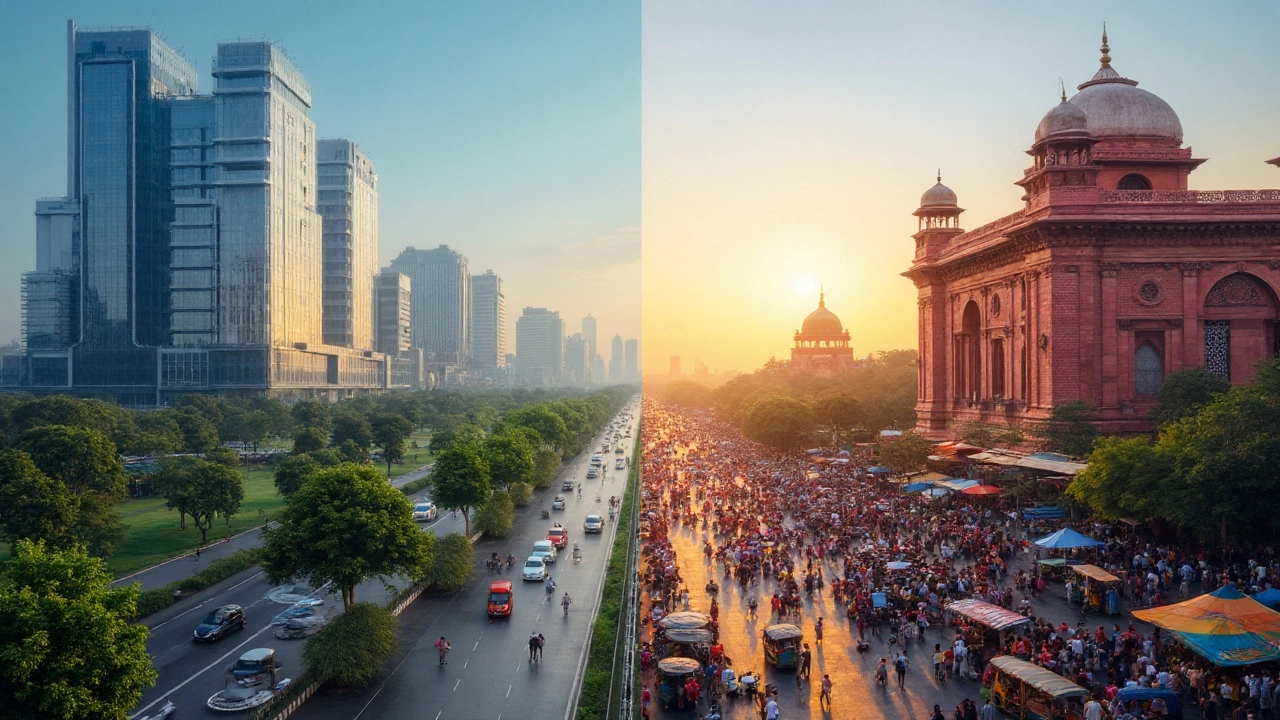
Explore a data‑backed look at whether South India is richer than North India, comparing GDP, per‑capita income, HDI, FDI, literacy and more.
When talking about Indian Economy, the total output, income and employment generated across India. Also known as India's economic system, it decides how resources are allocated, which jobs appear, and how public services are funded.
Indian Economy isn’t a single number; it’s a web of indicators that tell us where the country stands. One of the biggest pieces of that puzzle is GDP, the monetary value of all finished goods and services produced within a year. GDP shows the scale of activity, but it doesn’t reveal how that wealth is split among states or social groups. That’s why analysts pair it with other measures.
Per‑capita income translates GDP into a figure you can relate to – how much, on average, each person earns. When you divide the national GDP by the population, you see why some regions feel richer than others. For instance, southern states frequently post higher per‑capita numbers than many northern counterparts. Then there’s the Human Development Index (HDI, a composite score of health, education and living standards), which adds a social lens to pure economic output. A region with strong GDP but low HDI may still face quality‑of‑life challenges.
Foreign Direct Investment, or FDI, capital that foreign companies invest directly into Indian businesses, fuels technology transfer, job creation and infrastructure upgrades. States that attract more FDI often see faster growth in sectors like manufacturing and services, which in turn lifts their GDP and per‑capita figures. The interplay between FDI and HDI is clear: as new factories open, wages rise, and education programs expand, overall human development improves.
Literacy rates also matter. Education drives productivity, which pushes up GDP and per‑capita income. Regions with higher literacy tend to host more knowledge‑based industries, drawing both domestic and foreign investment. That creates a virtuous cycle—better schools attract firms, firms fund training, and the workforce becomes even more skilled.
Putting these pieces together creates a set of semantic connections: the Indian Economy encompasses regional disparities; GDP influences per‑capita income; HDI reflects the social outcomes of economic growth; FDI drives infrastructure and job creation; literacy underpins productivity. Understanding each link helps you see why the South often outpaces the North in wealth metrics.
Below you’ll find a curated article that unpacks one of the most debated comparisons—whether South India is richer than North India. The piece dives into GDP, per‑capita income, HDI, FDI, literacy and more, giving you a data‑backed view of the regional gap. As you read, keep the indicators we’ve outlined in mind; they’ll help you interpret the numbers and spot the patterns that matter most.

Explore a data‑backed look at whether South India is richer than North India, comparing GDP, per‑capita income, HDI, FDI, literacy and more.